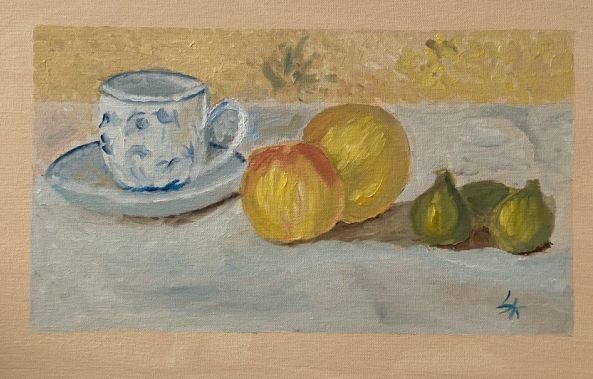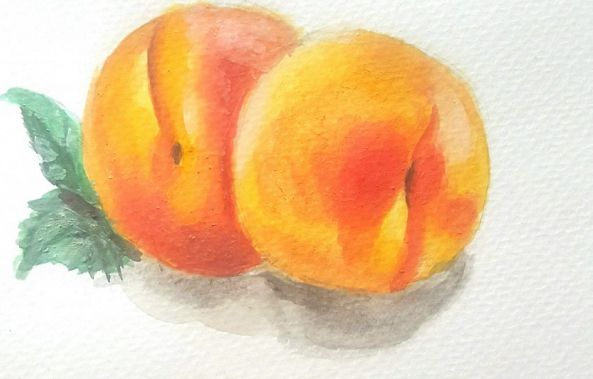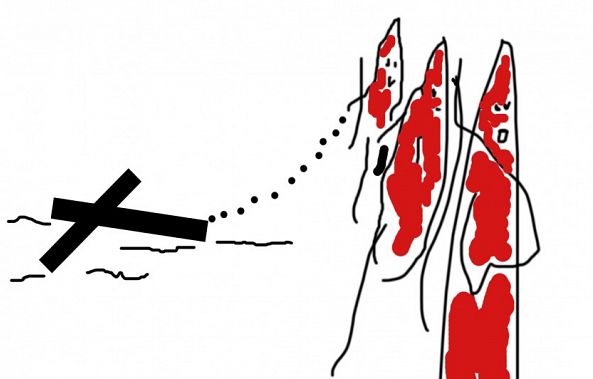Neoclassicism
Classicism and neoclassicism are very much related and refers to the same concept. Both forms of art are intertwined with Neoclassicism drawing its inspiration from classicism. For an adequate insight into what Neoclassicism is all about, an adequate insight into classicism is imperative. Classism refers to art forms that emerged in the ancient Greek and roman civilizations. Classism art form is such that is representative of the classical period. In simpler terms, classical art is associated with the period in Greece in which democracy was introduced. Classicism art generally to paintings, architecture and sculpture that is reminiscent of the classical period. Neoclassicism is very similar to classicism art because it is derived from classicism. Neoclassicism refers to the western movement towards classical art style. Neoclassicism refers to the period in which artists and architects became fascinated with ancient classical art form and Neoclassicism artworks.
.jpg)
Image via https://www.flickr.com
Neoclassicism time period emerged during 1770 to 1830 and was characterized by an inclination towards classical art. Essentially, the art form at this time was such that mirrored the features of the olden days Greek and Roman ideology, culture and art. While the ancient Greeks and Romans are one of the most antiquated civilizations, it can be said that their contributions to humanity, government and philosophy remained relevant for centuries to come and wielded so much influence even long after the collapse of both civilizations. Interestingly, Neoclassicism art movement began in Italy and soon started to stretch to other parts of the west. "Neo" which means new signifies the rejuvenation of classicism. The relevance of Neoclassicm art cannot be overstated as it represented the rejuvenation of some of the most powerful ideologies of ancient Rome and Greece as well as the preservation of an enduring culture that spun the wheels of modernization.
Neoclassical art style

Image via https://commons.wikimedia.org
Neoclassical art and classical art pretty much the same in terms of how the art looks. Neoclassicism characteristics in art is such that features an abundance of Greek and Roman myths, ideology and culture. If you are staring at an art of a naked man in a heroic pose, then you are definitely looking at a neoclassical art. Neoclassical paintings feature an almost theatrical use of lighting and a clean style with hard edges. The use of primary colors in painting is often a commonplace features and you can expect to find well polished marble in the case of sculptures. Neoclassical art has its distinctive style that could be best described as epic and mythical. Neoclassicism art history comes in the late 17th century and began to flourish in the 18th century. Neoclassicism art began with a desire amongst artist to mimic the design and style of the ancient roman and Greek civilizations.
Neoclassicism and the French revolution
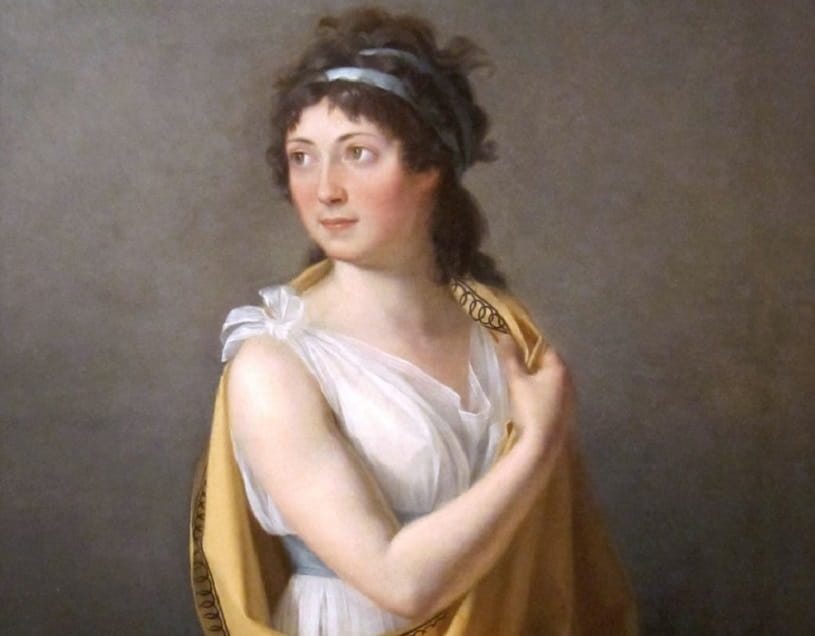
Image via https://en.wikipedia.org
Neoclassicism and the French revolution refers to the period in France that fuelled the re-emergence of classical art. Art has always been an instrument to mirror and inspire the society and this was particularly relevant when France experienced its revolution in 1789. The French revolution was such that repositioned paintings as a moral and political instrument and this naturally led to resurgence of classicism art. While Rococo existed alongside Neoclassicism art, it should be noted that Rococo painting style was more inclined towards entertainment and became obsolete after the French revolution. Rococo which represented a decorative and ornamental style of painting soon gave way to Neoclassicism painting which was geared towards cultural, ideological and political issues.
Neoclassicism artists and their works
Aeneas Tells Dido the Misfortunes of the Trojan City
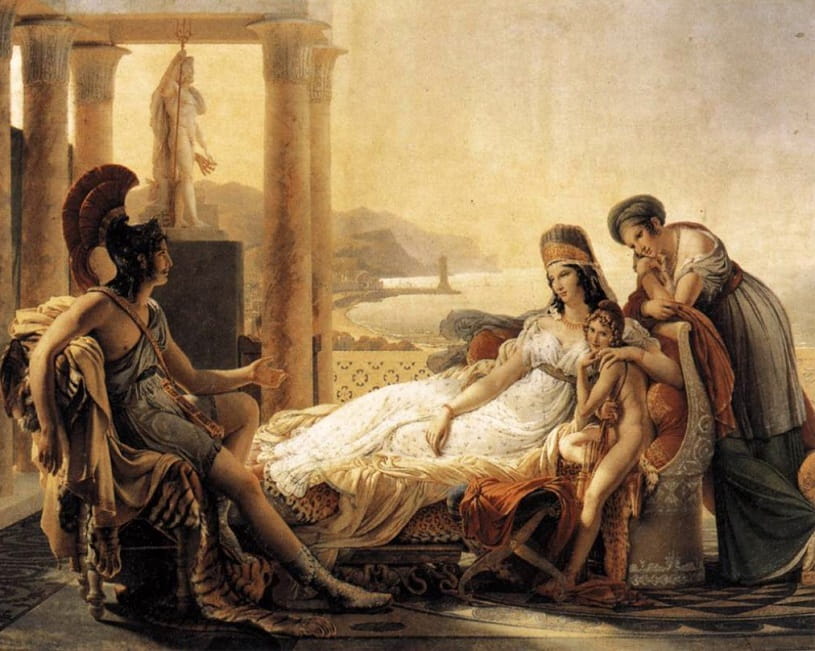
Image via http://allpainters.org
Aeneas Tells Dido the Misfortunes of the Trojan City is one of the most celebrated neoclassical paintings and it prominently features roman culture, myth and style. Created by a French painter known as Pierre-Narcisse Guérin in 1815, this Greco-roman painting captures the ancient mythology of the Greeks and Romans. Pierre Narcisse Guerin was a celebrated artist in his time and enjoyed a glorified career. He was crowned the president of the institute and was known for his paintings like Marcus Sextus whihc was displayed in the salon. He suffered from ill health whihc made him leave for Italy with Horace Vernet where he later died in Rome on 6 July 1833.
Andromache Mourning Over the Body of Hector

Image via https://4.bp.blogspot.com
Andromache Mourning Over the Body of Hector is another painting that was widely acclaimed in its time. This painting could be described as a neoclassical painting as well. Typically, neoclassical paintings have a strong Greek or roman style. In addition, these paintings often focus on Greek or Roman myths as well. This painting features Hector dead and laying on a bed after being killed by Achilles in battle. The painting shows a mournful state in which his wife is distraught as she kneels awkwardly beside his lifeless body. Also his so clings unto the mother in despair in a failed attempt to comfort her. This painting was created by Jacques-Louis David who is a French artist that was born in 30 August 1748. While he became renowned or his historical paintings, Jacques-Louis David formerly favored Rococo style painting before making a transition to a much more austere and Neoclassical form of painting. This was an expected transition at the time given the socio-political climate.
Aurora and Cephalus

Image via https://eclecticlight.co
Aurora and Cephalus is another masterpiece that was created by Baron Pierre Narcisse Guerin and falls in the category of history painting. The oil canvass painting is such that adorns a tall decorative panel and shows Aurora looking down reflectively on the sleeping human Cephalus. Aurora who is said to be the goddess of dawn is said to have fallen deeply in love with Cephalus. The painting style is such that is purely Neoclassicism. The painting features deep blue skies that is most likely the creation of quick brush strokes. The painting manages to evoke the break of dawn in a vivid way while capturing Cephalus sleeping soundly on earth. Created in 1810, this painting features a magical scenery that is represented by beautiful blend of colours.
Der Sultan
Created by Joseph Marie Ven, Der Sultan is a portrait painting that features sultan in an attractive and brightly coloured regalia. This painting was created in 1748 and could be described as one of the most popular Neoclassic paintings of the time. Painting of neoclassicism were typically from French artists, however there were many other artists that created neoclassic arts as well.
Joan of Arc at the Coronation of Charles
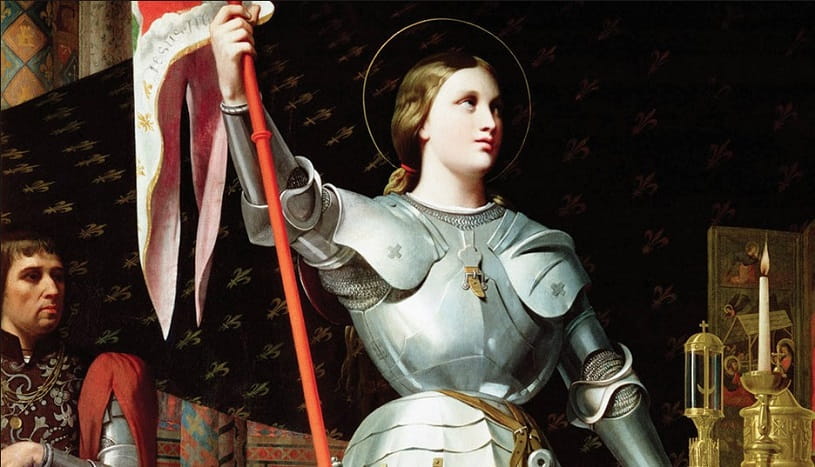
Image via https://www.newhistorian.com
Joan of Arc at the Coronation of Charles is one painting that stands out because its highly classical style. The painting permeates with the themes of male heroism, valour and honour. This 1859 painting by Jean Auguste Dominique Ingres and may be one of his best. Jean Auguste Dominique was born on the 29 August 1780.
Joseph-Antoine Moltedo is a painting that dates back to the 1823 and was created throughout a period of three years. Joseph-Antoine Moltedo is another celebrated work of Jean Auguste Dominique Ingres. The painting is a portrait of a man clad in a suit. The painting is done in classic style and features what could be described as a portrait of a wealthy middle-aged man.
L'excommunication de Robert le Pieux
Created by Jean Paul Laurens, L'excommunication de Robert le Pieux is a paiting that depicts the excommunication of the Robert the second of France. The painting was acquired by the State in 1875, which led to it being kept in the Luxemburg museum, until 1929, when it is conveyed to the Louvre Museum. It is now amongst the collections of the Museum of Orsay since 1982.
Portrait of Monsieur Bertin

Image via https://useum.org
Portrait of Monsieur Bertin is a portrait painting that is executed in neoclassic style. The painting features a man in an upright sitting position. Created by Jean Auguste Dominique Ingres who happens to be a French Neoclassical painter, this work is one of his many Neoclassical painting style. Born on the 29th of August 1780 in Montauban, France, Jean Auguste also embraced romanticism and symbolism art styles in his lifetime.
Marcus Aurelius Distributing Bread to the People
This painting was created by Joseph-Marie Vien and focused on Marcus Aurelius. The painting depicts Marcus Aurelius distributing bread to the people. This painting falls under the category of history painting and can be described as one of the most famous neoclassical paintings of all time. While Joseph- Marie thought himself to be a painter of history, it is worth mentioning that his works a were actually neoclassical paintings. This painting was created in 1765 in the wake of the neoclassical painting movement.
Patroclus
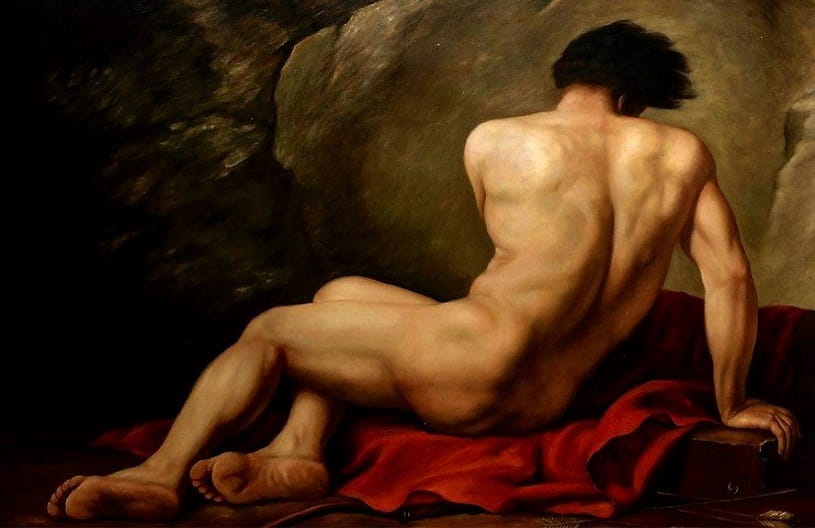
Image via https://www.overstockart.com
Patroclus is a neoclassical painting that was created by the artists Jacques-Louis David. This painting is a typical classical painting and features a man with a muscular and chiseled physique sitting naked on the floor in an awkward position where he backs the viewer. This painting was created in 1780 and features Patroclus who is the child of child of Menoetius and Philomela. This historical and mythical painting is such that has its roots in Greek tradition.
Neoclassicism definition in art can be explained as art that is intended to inspire values, tradition and reignite the yearning for the political and ideological compass of the ancient Greek and Roman civilizations. Baroque, rococo, neoclassicism on the other hand is simply aimed at decorative and ornamental values. The sole purpose of baroque, rococo and neoclassicism painting is to entertain the viewer. This is why the style of painting adopts an exaggerated approach with elaborate movements. This exuberant and European style painting was simply geared towards aesthetic appeal. Neoclassicism artwork simply had a more political agenda.
Neoclassical sculpture

Image via https://www.flickr.com
Neoclassicism sculpture is such that comes in the ancient roman or Greek style. From the themes of the sculpture to the use of shiny marble, neoclassicism sculpture spread throughout Europe in the 18th century with different exponents in different european countries.
Neoclassical sculptures and the artist that created them are as follows.
A River
This sculpture was created by none other than the celebrated Jean-Jacques Caffieri. The theme of the sculpture is centered on Mythology and it was created in 1759. Jean Jacques is a neoclassical sculptor and painter. Born in 1725, Jean Caffieri had a bigger reputation for his paintings.
Bust of Vincent Coster
The bust of Vincent Coster is one of the most popular neoclassical sculptures and it is symbolic of Netherlands neoclassical art movement. Created by Hendrick de Keyser. This portrait of Vincent Coaster was one of the first sculpture portraits of a civilian and it was sponsored by Vincent himself.
Dying Gladiator
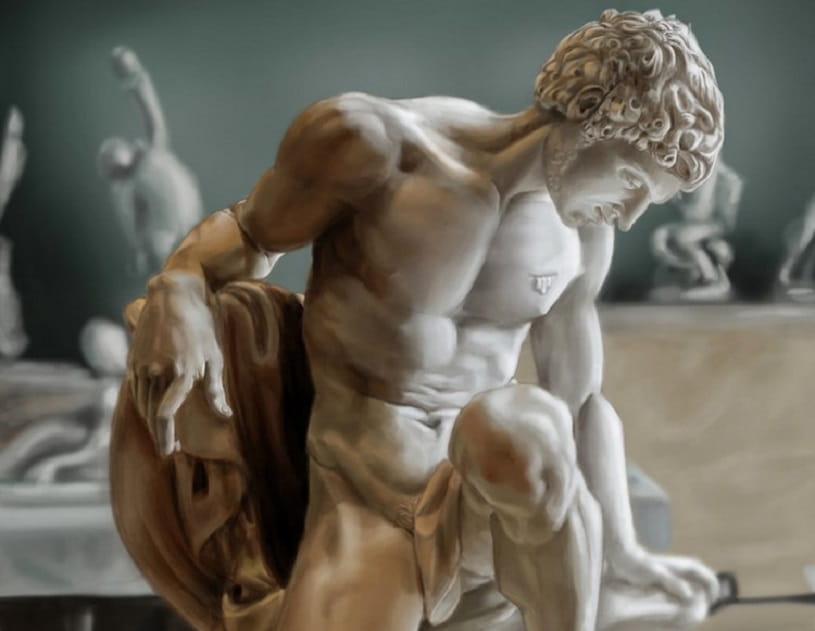
Image via https://zingo.artstation.com
This sculpture shows a gladiator that has fallen in battle. Gladiators were an important aspect of roman culture and were entertainment fighters that fought in amphitheaters. The Dying Gladiator is a neoclassic sculpture that was created by Pierre Julien. Born on 20 June 1731, Julien is known for working on an extensive range of Rocco and neoclassic sculptures.
La Chasse au lion
This sculpture was created by Antoine-Louis Barye and features wildlife at its best. Created by Antoine-Louis Barye, this artwork is a blend of sculpture and metal.
Prometheus Bound
Crafted by Nicolas-Sebastien Adam in 1762, Prometheus is a neoclassical artwork and one of the many sculptures of Nicolas Sebastien Adam.
Neoclassicism in Fashion

Image via https://bonjourparis.com
Neoclassicism in fashion has pervasive influence even before the French revolution. However, it is worth mentioning that this influence was particularly in the area of women's clothing and was only used when women sat down for portraits of themselves. However, following the French revolution, dressing in classical style became the norm amongst women. Women started to dress in Neoclassical attires which was characterized by the simplicity of classical style. It was quite common to find shorter classical hairdo which were often seen in curls and this was pervasive. Women's hairdo was not concealed even in the open except when they wore evening dresses. The use of bonnets was widespread and the use of thin Greek ribbons were quite popular as well. The norm became light and loose clothing for women which like in Greek style often comes in white and with no arms. The use of roe sheer from the ankles was quite common as well. The use of strong thin hem or tie was a common feature of the women's attire at the time. The movement towards neoclassicism affected women’s fashion profoundly after the French revolution.
Neoclassicism in Music
Neoclassicism music emerged in the twentieth century but it drew its inspiration for the eighteenth century. Neoclassicism music is characterized by a distinctive sense of harmony and aesthetic appeal. The focus was on the rhythm of the music and contrapuntal texture. Some of the famed Neoclassicism music composers and works includes Béla Viktor János Bartók who is a Hungarian composer. He was born in 25 March 1881 and is considered one of the greatest composers. He was one of the originators of comparative musicology and was known for opera and folk music genre. Other celebrated neoclassicism composers include Leonard Bernstein, Nadia Boulanger, Benjamin Britten, Ferruccio Busoni, Aaron Copland, and many more David Diamond.



